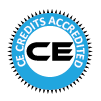Day 1 :
Keynote Forum
Dr.Ivo Krejci
University of Geneva, Switzerland.
Keynote: Laser-assisted minimally invasive pediatric dentistry
Time : 09:00-09:25
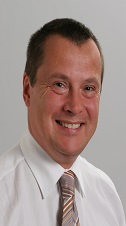
Biography:
Ivo Krejci graduated from University of Basel, Switzerland and received his Dr. Med. Dent. degree in 1986 and his Privatdozent (Switzerland) in 1993 from the University of Zurich, Switzerland. He is a fellow of the Academy of Dental Materials and has a postgraduate specialization diploma of the Swiss Society of Preventive and Restorative Dentistry. He is past president of the Swiss Society of Preventive and Restorative Dentistry, past president of the Academy of Operative Dentistry European Section, past Member of the Editorial Board of the Journal of Dental Research and member of several associations. He has published over 280 articles and book chapters on restorative concepts, esthetics, posterior composites, tooth colored adhesive inlays, onlays and adhesive slot bridges, light curing, adhesion, glass ionomers, base materials, finishing techniques, compomers and lasers and is the author of three textbooks. He has supervised more than 60 doctoral theses and has lectured on numerous international scientific meetings and continuing education courses. He is currently Ordinary Professor and Chairman of the Division of Cariology and Endodontology, Director of the Department of Preventive Dentistry and Primary Dental Care and President of the Section of Dental Medicine at University of Geneva, Switzerland.rn
Abstract:
Newborn children will live almost hundred years in many countries and they will like to keep their own natural dentition for a lifetime. The challenge of modern dentistry is to cope with this expectation. The lecture will focus on a concept which aims to avoid tooth extractions during the entire life of the patient and within which laser-assisted pediatric dentistry plays a key role.
Keynote Forum
Dr. Fellus patrick
President of the French Society of Pediatric orthodontics
Keynote: From sucking to swallowing deglutition by cortical or subcortical ways
Time : 09:25-09:50

Biography:
robert university hospital debrernPresident of the French Society of Pediatric orthodonticsrnorthodontist qualified expert author of three booksrnrehabilitation of swallowingrnorthodontics dentitionrndysfunction in dysmorphosis contribution froggymouth
Abstract:
Physiological swallowing and the abandonment of the suction are essential to build a beautiful occlusion.This acquisition occurs spontaneously for 60% of children at age 4 years; sample from which recruits children who will Never need orthodontic treatment.When the child require orthodontic treatment, acquiring a good swallowing will reduce the duration of treatment and ensure the stability of the results. This change in the swallowing program Can be done by cortical or subcortical ways
Keynote Forum
Prof Katarzyna Emerich
Medical University of Gdansk
Keynote: Early Childhood Caries – what do we know and how shell we act ?.
Time : 09:50-10:15
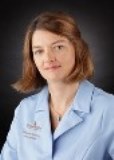
Biography:
Paediatric Dentist; Head and Clinical Director Depatment of Paediatric Dentistry Medical University of Gdansk, Poland; Consultant in Paediatric Dentistry for the Pomeranian Region; Associate Editor in European Journal of Paediatric Dentistry (IF=0,515), Member of the Editorial Board in 5 other international dental journals and referee in a number of international journals; Member of the National Examination Board for Paediatric Dentistry; Founding member and President of Polish Academy of Paediatric Dentistry; Member of European Academy of Paediatric Dentistry, International Association of Paediatric Dentistry and American Dental Association; author of over 140 published articles;
Abstract:
Early childhood caries (ECC) is one of the most prevalent chronic diseases among young children worldwide. Despite the general global decline in dental caries in the past decades, ECC is still a significant problem in many countries. Well known etiology of ECC may be modified by several factors unique to young children, related to the implantation of cariogenic bacteria, immaturity of the host defense systems, as well as behavioral patterns associated with feeding and oral hygiene in early childhood. rnCaries prevention commencing before and continuing into the early dentate period is necessary. Risk-based disease prevention of ECC requires family engagement, leading to effective day-to-day behavior modification that addresses disease etiology. There are useful risk assessment indicators to identify preschool children at risk for caries. The most effective chemotherapeutic strategies to prevent ECC are currently confirmed as the usage of fluoridated toothpaste and fluoride varnish. Additionally, motivational interviewing, could be effective for motivating oral health behaviors and shows promise for reducing caries. Primary care physicians play an important role in providing access to preventive dental services, particularly for preschool children.rn
Keynote Forum
DR. SAMEH SAMY ABDOU
Director egyptian society of dental implant
Keynote: Constraints and Obstacles in Dental Implant Treatment

Biography:
B.d.s (1983 ), m.s. prosthodontics(1992) , alexandria university Egypt .Diploma in implantology , sevilla university Spain.(2007) consultant in prosthodontics&implantology(2002)private practice limited to prosthodontics &implantology alexandria Egypt . Continuing dental implant course ,royal college of surgeon ,Edinburg 2005 .dental implants courses Seville university Spain 2006,2007.Dental education programs ,new York university 2006 . Speaker & consultant implantology courses alexandria dental syndicate 2008 ,speaker Egyptian association of dental implant 2009.speaker dgzi congress ,Damascus 2009.speaker Syrian dental association congress 2009,2010speaker Lebanese dental association congress Tripoli 2010 ,2013.speaker sevilla dental implantology congress 2010 .speaker Tanta university dental implant course 2013. Course director Egyptian society of dental implant since 2009.speaker several national & intentional events.
Abstract:
rnThe appropriated placed dental implants are the most reliable method of tooth replacement. rnrn Keys to dental implant success should include proper case selection, excellent surgical technique, placing adequate restoration on the implant, educating the patient to maintain meticulous oral hygiene.rnrn Although the overall success rate of dental implant is very high, there are few absolute Constraints and Obstacles .The experienced trained clinician should have little difficulty in assessing patients as suitable. rn
Keynote Forum
Byeong-Hoon
Institute of Seoul National University,Korea
Keynote: Effect of pulsed-power plasma on the adhesion of resin composite to dentin.
Time : 10:15-10:40
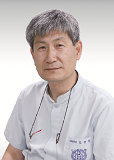
Biography:
Professor Byeong-Hoon Cho has completed his DDS from Seoul National University Dental College in 1984 and PhD from Seoul National University in 1993. He is a Professor of the Department of Conservative Dentistry, Seoul National University School of Dentistry, and the director of Dental Life Science Research Institute of Seoul National University Dental Hospital. He has published more than 105 papers in reputed journals and is serving as the Editor-in-Chief of the Restorative Dentistry & Endodontics
Abstract:
This study investigated the effect of a pulsed-power plasma on the adhesion of resin composite to dentin and its durability. A pencil type helium plasma jet was used with pulsed power of 1.2 W at 400 Hz. Dentin adhesion and its durability were compared using a microtensile bond strength (MTBS) test before and after 10,000 cycles of thermocycling (TC), according to the following surface treatments after etching and rinsing: air dry with no plasma (AD); pulsed plasma dry with a pulsed power of 1.2 W (PP); re-wetted after pulsed plasma dry (RW); with wet-bonding (WB). Then, Single Bond 2 and Z-250 resin composite (3M ESPE) were applied according to the manufacturer's instructions. Data were analyzed with repeated-measures ANOVA and post hoc Scheffe test (ï¡ = 0.05). The MTBS of AD, PP, RW and WB groups at 24 h were 28.9 (9.5)ab, 61.2 (14.3)d, 58.6 (14.6)cd and 52.2 (16.8)cd, respectively. They were 16.3 (5.8)a, 44.9 (14.3)bc, 57.3 (18.4)cd and 66.9 (13.6)d after TC, respectively. Within the limitation of this study using a total-etch 2-step adhesive, when the dentin surface was dried with pulsed plasma spray after etching and rinsing, the MTBS was similar to that obtained with wet bonding technique. After TC, although the MTBS obtained with pulsed plasma dry decreased significantly, that obtained with rewetting did not decrease. Although pulsed plasma treatment using low applied energy improved the dentin adhesion, the plasma treated surface need to be rewetted for durability.
Keynote Forum
Dr.Avi Reyhanian
Netanya, Israel
Keynote: THE USE OF THE ERBIUM YTTRIUM ALUMINUM GARNET (2940 nm) IN A LASER-ASSISTED IMPLANT THERAPY-2016

Biography:
Dr. Reyhanian graduated from the University of Bucharest, Romania in 1988. He then participated in a fellowship program at the Oral & Maxillofacial Department Rambam hospital in Israel. He currently practices general dentistry and oral surgery in Netanya, Israel.rnDr. Reyhanian’s practice has employed dental lasers since early 2002.rn -He is a member of the academic staff at the Institute of Advanced Dental Education in Haifa, Israel rn-He is a member of the ALD –Academy of laser dentistry- rn-He is a member of the Israel Society of Dental Implantology. rn-He is the secretary of the Israeli dental laser society.rnHe is lecturing dental lasers in the dental school of Hadassah university ,from Jerusalem.rnFive wavelengths are used in his practice: Erbium:YAG (2940nm), CO2 (10600nm) ,Diode (830nm,980nm) and LLLT (808nm)rnDr.Reyhanian has been publishing and lecturing extensively worldwide in the field of dental laser. He is a reviewer of several dental Journals rn. Dr.Reyhanian was the global opinion leader of Lumenis Company for dental laser division.rnToday he is a luminary doctor of Syneron Company for the dental laser division.rn
Abstract:
The array of available clinical applications for laser assisted dentistry is growing rnrnrapidly, with the greater number of applications being for oral surgery.rnrn Er: YAG is a laser wavelength which is located in the infrared zone of the rnrnelectromagnetic spectrum (2940nm), is considered to be extremely safe, and is thernrn dominant wavelength in dentistry today . Er: YAG is one of the most suitablernrn wavelengths for bone applications.rnrnThe presentation will demonstrate the use of the Er:YAG laser in the world of rnrnimplantology, and the advantages vs. conventional treatment methods.rnrnMy purpose in this presentation is to put some order into the chaotic information surrounding the subject and to provide some answers to the most common and frequent questions I often meet: How far we can go with this technology? Is it just a marketing tool or proven therapy? Where is the line between reality and fantasy? Does the new technology completely replace the conventional methods and if not, at which point do we lay the laser's hand piece down and re-employ the "old" tools and conventional ways?rnThis lecture will exhibit, beyond any doubts, that Er:YAG laser is very valuable tools for implantology. and will show cases studies with 8-year follow-ups, each procedure explained in details including video exhibitions rn
Keynote Forum
Dr.Marwa Abdelaziz
University of Geneva,1205 Geneva, Switzerland
Keynote: Caries diagnosis with lasers and their alternatives
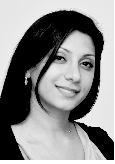
Biography:
Marwa Abdelaziz: Graduated from the University of Geneva in 2010 and since she has been working simultaneously in a private practice as a general dentist and at the University of Geneva (Division of cariology, endodontlogy and pediatric dentistry) teaching students and conducting research. In 2013 at the age of 29 years ,Marwa Abdelaziz started a PhD Project supervised by the University of Amsterdam (ACTA) and the University of Geneva, the subject of the research is focused on non-invasive diagnostic methods and non-invasive treatment options of initial carious lesions like infiltration and sealing.
Abstract:
In developed countries, clinical manifestation of caries lesions is changing: instead of being confronted with wide open cavities, more and more hidden caries are present. For a long time, the focus of the research community was to find a method for the detection of carious lesions without the need for radiographs. In the last few years different detection and diagnostic tools were introduced and are mostly based on laser transillumination or the reflection of the emitted wavelength, providing sensitive information about early non cavitated lesions. This improved imaging and diagnostic capabilities will provide greater support to promote the principles of minimally invasive dentistry including caries monitoring of non-cavitated carious tooth surfaces, remineralisation therapy, and use of non invasive preventive and restorative materials that will improve our ability to monitor disease activity and the out- comes of preservative therapies.
Keynote Forum
Dr. Randa Shaker
King Faisal Specialist Hospital and Research Center,Saudi Arabia
Keynote: Bleaching Feom A To Z
Time : 10:55-11:20

Biography:
Consultant – Advanced General Dentistry and Residency Program Director in King Faisal Specialist Hospital and Research Center
Abstract:
Teeth whitening is a common and effective method for restoringrndiscolored vital teeth. It has been practiced since the ancient time.rnAncient Romans used urine and goat mild in an attempt to whiten theirrnteeth.rnAccording to FDA, whitening restores natural tooth color and bleachingrnwhitens beyond natural color. There are many techniques available,rnteeth bleaching is the most requested in cosmetic dentistry today.
Keynote Forum
Pr. SALIHA CHBICHEB
Consultation Center of Dental Treatments of Rabat
Keynote: BURKITT LYMPHOMA IN CHILDREN : A CASE REPORT

Biography:
-1995 : Internship in Periodontology, Oral surgery, Pediatric dentistry, Prosthodontics and Orthodontics for a period of 2 years, Consultation Center of Dental Treatments of Casablanca, Faculty fo Dentistry of Casablanca, Morocco.rn-1996 : Doctorate of Dental Surgery, Faculty of Dentistry of Casablanca, Ain Chok University of Casablanca, Moroccorn-1997 : Resident in Oral surgery department ; Consultation Center of Dental Treatment of Rabat, Faculty of Dentistry of Rabat-Morocco.rn1997-Present : Author of many national and International publications in the field of Oral surgery, Oral Medicine and Oral Oncology.rn1997-Present : International Speaker (Oral & Poster Presenter) in different meetings of Oral Surgery and Head & Neck Oncology.rn-2011-Present : Professor and Head Department of Oral Surgery in the Consultation Center of Dental Treatments of Rabat, Faculty of Dentistry, Mohammed V University of Rabat-Morocco. rn-2011-Present : Coordinator of the Thesis Committee, Faculty of Dentistry of Rabat, Mohamed V University of Rabat-Moroccorn -2012-2013 : Coordinator of the examinations for the promotion of the fourth academic year students.rn– Member Of The French Society Of Oral Medicine And Oral Surgery.rn- Member Of The Moroccan Society Of Oral Medicine And Oral Surgeryrn- Permanent Member In The Research Project Of Cancers Of The Oral Cavityrn
Abstract:
Burkitt's lymphoma is a rare form of malignant non-Hodgkin lymphoma mature B cells. In Europe and North America, representing about half of non-Hodgkin lymphomas in children and about 2% of those in adults. Indeed, two incidence peaks exist: the first is in childhood / adolescence / early adulthood and the second after 40 years.rnMale individuals are preferentially affected. Patients infected with the HIV virus and that the antiviral therapy is not optimal are particularly susceptible to developing Burkitt's lymphoma. Two forms exist: one is called "endemic" (sub tropical Africa) and linked to the Epstein Barr Virus (EBV). Diagnosis is based on biopsy of a mass or puncture of an effusion or bone marrow revealing the presence of tumor cells. The staging is performed using imaging (mainly ultrasound and scanner). Differential diagnosis includes other forms of child abdominal tumors (such as Wilms' tumor and neuroblastoma. The management should be done in a specialized center in oncology / hematology. The treatment is based on chemotherapy which is some months but intensive. Our clinical observation reports the case of a girl aged 13 who presented with severe oral manifestations budding Burkitt lymphoma having evolved after 2 years of treatment.rn
Keynote Forum
Dr.Wafaa El Wady
Professor and chief department of Oral Surgery in the Consultation Center of Dental Treatments of Rabat
Keynote: VIROINDUCED ORAL CANCERS

Biography:
Abstract:
Oral cavity cancers are in sixth place in men and the eighth in women worldwide. They are often favored by alcohol intoxication and/or smoking but approximately 25% of these cancers are virus-induced tumors. Four viruses are clearly associated with the occurrence of some forms of cancer of the oral cavity.rnThe human papilloma virus (HPV) belongs to the family of the Papillomaviridae. It’s an extremely common virus in the nature with sexual transmission. Some high-risk genotypes are considered as agents who may increase thecancer risk of the upper aerodigestive tract. These cancers are a distinct clinical entity and develop in young patients not necessarily subject to Ethylo tobacco intoxication.They mostly affect the oropharynx, invade the lymph nodes and are poorly differentiated histologically.rnEpstein-Barr virus (EBV) a member of the Herpesviridae family that infects most of the world's population. In the oral cavity, EBV,transmitted by saliva is associated with Burkitt's lymphoma. It is an aggressive form of non-Hodgkin lymphoma due to the malignant proliferation of cells B. There are three types of Burkitt: endemic, sporadic and linked to HIV infection, which are associated with significant differences in epidemiology, clinical form and biology.rnThe human herpesvirus 8 (HHV-8), also called KaposiSarcoma Herpesvirus (KSHV) is considered as the etiologic agent of Kaposi's sarcoma. It’s a malignant multifocal mesenchymal tumor of blood and lymph vessels. There are four types of sarcoma: classic, endemic, iatrogenic and epidemic HIV associated, which are involved with significant differences in clinical and epidemiological aspects.rnThe Hepatitis C virus (HCV) is an RNA virus belonging to the Flaviviridae family. It is transmitted primarily through blood. At the oral cavity, HCV is associated with oral lichen planus (OLP). It is a chronic inflammatory skin disease, characterized by a keratinization disorder with polymorphic clinical aspects. During its evolution, the OLP has an increased risk of malignant transformation leading to the development of a verrucous or squamous cell carcinoma.rn
Keynote Forum
Dr.NARJISS AKERZOUL
Resident Oral Surgeon
Keynote: Oral Squamous Cell Carcinoma in Pediatric Moroccan Population: A Retrospective Study
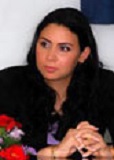
Biography:
2005-2011 : Doctorate of Dental Surgery (DDS), Faculty of Dentistry of Rabat, Mohammed V University, Moroccorn2011-2012 : General pratitionner Dentist in Oral Health Center of Guelmim City, Moroccorn2012-Present : 3rd Year Resident Oral Surgeon in Center of Consultation of Dental Treatments of Rabat, Faculty of Dentistry of Rabat, Mohammed V University, Moroccorn2014-2015 : Universitary Diploma of Biostatistics and Research Methodologyrn2014-Present : rn-Author of many International Publications in the field of Oral Surgery and Oral Oncology.rn- International Presenter (Oral & Poster Presenter) in different meetings of Oral Surgery and Head & Neck Oncology in Turkey and the USA.rnMay 2015-Present : Editorial Board Member in Department of Oral and Maxillofacial Surgery of the International Journal of Oral Health and Medical Research ( IJOHMR)rnJuly 2015-Present : Reviewer in OMICS GROUP Biomedical Journals.rnSeptember 2015-Present : Editorial Board Member in Journal of Cosmetology and Orofacial Surgery.
Abstract:
PURPOSE: rnStudy the epidemiological and histopathological profile of the oral cancers in children in care at the Pediatric Hemato-Oncology, Stomatology and Maxillofacial Surgery departments at the 20 August hospital in Casablanca, and at the hospital of children in Rabat. Our aim is to define the importance of the pediatric oncology, especially the one affecting the oral cavity, and also to describe the oral cancers in children, theirs frequences and theirs histopathological characteristics. We did collect 71 patients consultation records and files between 2004- 2012. rnMATERIALS AND METHODS: rnThis is a retrospective study of 126 children hospitalized between 2010 and 2013 of the Pediatric Hemato-Oncology Department, Stomatology and Maxillofacial Surgery department at the 20 August hospital in Casablanca, and also in the Pediatric Hemato-Oncology Department at the hospital of children in Rabat, and in which we did diagnose a confirmed cancer of the oral cavity. rnRESULTS:rn In our sample, all age groups were affected by the disease process, but ages between [0-4] years and between [13-16] were the most affected with an average of age of 8 years, and extremes ranging from 4 months to 16 years. In our population sex sample, we noted a slight female predominance with 50.7% of cases . Non-Hodgkin lymphoma Burkitt was the most common histological type with 35.2% of cases. Cheeks represented the most frequent localization with 37.9% of cases, while the maxillary represented 19.7% of cases. Chemotherapy has been the exclusive therapeutic strategy most used in our sample in 67.6% of cases.rn CONCLUSION: rnEpidemiological, clinical and pathological characteristics of cancers of the oral cavity in our population are not different from the literature data. However, the parents lack of awareness and late diagnosis of these lesions appear to be responsible for the dramatic profile of oral cancers.rn
Keynote Forum
Dr.Shmuel Einy
physician,Rambam Medical Center, Haifa
Keynote: Circumferential Supra Crestal Fiberotomy Orthodontics (CSFO) for Reducing of Orthodontic Treatment

Biography:
Attending Physician, unit of Orthodontics and Craniofacial anomalies, Department of Oral and Dental
Abstract:
a. Rationale: Periodontally Accelerated Osteogenic Orthodontics (PAOO), a novel orthodontic treatment combined with adjunctive surgery of corticotomy and bone augmetation, seems to be promising not only for reducing orthodontic treatment duration, but also for biological aspects during and after orthodontic treatment. However, some patients feel restraint to pass PAOO due to its morbidity and higher fee. Circumferential Supra-crestal Fiberotomy Orthodontics (CSFO) is an adjunctive orthodontics combined with a very minor surgery in orthodontic use for almost fifty years (Edwards (1968 for preventing rotational relapse in the end of the orthodontic treatment. The procedure is performed by inserting a blade into the periodontal pocket around the tooth detaching the supracrestal and transseptal fibers connection above the alveolar crest. Recently, CSFO was proposed as an alternative to PAOO due to significant alveolar bone induction enables rapid tooth movement (Binderman2010). It was also found that CSFO is expressed in accelerated tooth movement in rat teeth model and reduces relapse at the end of treatment as well (Binderman 2013).rnb. Diagnosis and etiology: Adult patients passing CSFO would be presented in a vareity of approach - non extraction, lower incisors and four units extactions.rnc. Treatment objectives and alternatives: The aim of this study is to show that CSFO can serve as an alternative for PAOO in shortening the orthodontic duration.rnd. Treatment results : Orthodontic traement princples for rapid treatment andrn a comparison with between SCFO and PAOO would be discussed.rne. Conclusions: CSFO is a multidisciplinary team approach enable shortened treatment duration of adult teeth movement in three dimensions with biological advantages. Further clinical research is warrantedrn
Keynote Forum
Dr.Ruth Nebel
Researcher, Berlin, Germany
Keynote: Maxilla’s Occlusal Plane –Tool for Orientation in Space? A new Aspect concerning Temporomandibular Dysfunction (TMD
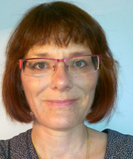
Biography:
Abstract:
A connection between teeth and body posture has been assumed ever since. While occlusion all in all has not shown a connection to body posture, craniofacial heights do provide this. This suggests a relation to an external goal and raises the question, whether the upper occlusal plane is positioned to space rather than to the body. This would even concern man’s orientation to space. rnrnWhile an EbM/EbD- investigation has been lacking in the theme, video recordings with exact focus were used. The position of the upper occlusal plane is shown with a marking cross fixed to upper teeth. It then has been adjusted to the true horizontal and the movement direction.rnrnProvisional ResultsrnIn walking, running and jumpingrn- the marking cross stays spatially constantrn- wafers of asymmetrical thickness affect an asymmetric body posture and uneven motion. The marking cross stays spatially constant meanwhile.rn- The interpupillary line is spinning around the marking cross.rnrnProvisionally is concluded, that teeth seem to be connected to posture via the position of the occlusal plane to the skull. Maxilla and the upper occlusal plane seem to image the spatial dimensions. Changes in teeth length, even iatrogenic (!), will turn body posture and movements asymmetrically: Shear forces by torsions and a non-axial loading will damage the body’s structures. This seems to be the pathomechanism for pain in TMD.rnrnIntegrating the spatial function of teeth in dentistry may prevent and cure TMD. Therefore, a spatial articulator is recommended. rn
Keynote Forum
Dr. Abdullah Mohammed Alzahem
Ministry of National Guard Health Affairs and King Saud bin Abdulaziz University for Health Sciences
Keynote: Effectiveness of a dental students stress management program

Biography:
Dr. Abdullah Alzahem earned his BDS degree from King Saud University on 1995. In 1997, herncompleted a fellowship program in the field of Temporomandibular Joint with Tufts School ofrnDental Medicine, Boston, MA. In 1998, he completed Advanced Education in General Dentistryrnresidency program in Baylor College of Dentistry, Dallas, TX. In 2004 he was annonced as Fellowrnof Academcy of General Dentistry, and appointed as Dental Consultant. In 2009 he completedrnMaster in Medical Education in King Saud bin Abdulaziz University for Health Sciences. In 2015rnhe earned a PhD degree from Erasmus University Rotterdam, The Netherlands.
Abstract:
The dental education stress effects and sources were explored thoroughly in the literature,rnbut the effectiveness of stress management programs received less attention. This study introducedrna new stress management program, named Dental Education Stress Management (DESM) program.rnIt showed its effectiveness in a quasi-experimental pretest-posttest-follow-up-control group design.rnThe new program was based on the principle of psychoeducation and consisted of three 90-minuternsessions, to teach dental students how to better deal with their stress symptoms and to reduce theirrngeneral stress level. Two instruments were used to assess the level of stress of the dental students,rnnamely the Dental Environment Stress questionnaire (DES), and the Psychological Stress Measurern(PSM-9). Results show that the DESM program has the desired effect of decreasing the stress levelsrnof its participants, and these effects lasted for at least two weeks.. Because of severalrnmethodological limitations of the study more research is needed to draw more generalizablernconclusions.
Keynote Forum
Dr.Abdulhameed Ghassan Albeshr
King Saud bin Abdulaziz University for Health Sciences
Keynote: Periodontal Disease and Associated Risk Factors; A Systematic Review
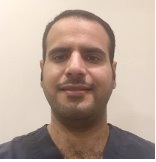
Biography:
Dr. Abdulhameed G.Albeshr earned his BDS degree from King Saud University in Riyadh, SaudirnArabia in 2010. In 2015, he completed his master of public health in community andrnenvironmental health in King Saud bin Abdulaziz University for Health Sciences in Riyadh, SaudirnArabia.
Abstract:
Introduction: Periodontal disease is more prominent in developing countries. It is common in all ages and affects both genders. Unhealthy periodontium cause serious problems for the individual and lead to tooth loss.rnrnObjective: Determine prevalence of periodontal disease and its risk factors.rnrnMethod: Electronic search conducted on Pub-Med using Inclusion criteria; articles in English about prevalence of periodontal disease and its risk factors from 1990 to 2014. 47 articles were identified initially and after applying exclusion criteria only nine articles were selected for this review.rnrnResults: Prevalence of periodontal disease effect 63%-68%. In the patients above 40 years old, an average of 76% of extracted teeth was due to periodontal disease. The main risk factor for periodontal disease is poor oral hygiene. The role of smoking in developing of periodontal disease was clear. Diabetic patients have the highest prevalence of periodontal disease compared with other diseases, which is 21%.rnrnConclusion: The prevalence of the periodontal disease is high and more studies needed in different cities and in rural areas. Proper sampling and longitudinal studies should be considered to ensure representativeness and confirm the causality. The direct relation between poor oral hygiene and periodontal disease is clear. This review provides convincing evidence about effect of tobacco smoking on oral health. The review shows high prevalence of periodontal disease among diabetic patients. Better understand the full extent and characteristics of periodontal disease in our population beside public health programs will diminish the effects of the disease.rn
Keynote Forum
Dr. Fouad Abduljabbar
Associate consultant endodontist
Keynote: Treatment of Dens invaginatus with anatomical modification
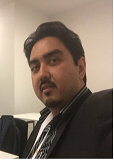
Biography:
- Consultant Endodontist rn- Director of Dental Supplies and Materials & Equipment of Endodontics department rn- Coordinator of Endodontic department rn- Clinical supervisor of Saudi board dental student and dental interns rnDental services, West Region, King Abdulaziz medical City, The ministry of National Guard, Jeddah,rnSaudi Arabiarnrn- Academic Teaching Staff, Ibn Sina Medical College, Jeddah, Saudi ArabiarnrnI am author of some scientific articles in reputed journals. I have presented number of dental lectures, as well as dental courses in and out of Saudi Arabia. rn
Abstract:
Dens invaginatus is a dental anomaly that may show many different complex anatomical forms. The complexity of the internal anatomy of the root canal may create difficulties and challenges for treatment completion of the root canal. A 10-year-old girl was referred by her dentist for suffering from pain and a persistent infection arising from the maxillary left lateral incisor. After clinical examination, the case was classified as Oehler’s type II due to invagination extending through the root canal with no communication with the periodontal tissue. The main canal was contained a central cylindrical mass of hard tissue. Owing to a limitation in access to the canal system and the cleaning and sealing of canal spaces, a modification of the internal anatomy of the canal system was achieved under the operating microscope. The conventional chemical and mechanical preparation with sodium hypochlorite combined with intracanal calcium hydroxide was done. The root canal was obturated with MTA. In this case, the conventional root canal treatment and the modification of the internal anatomy were able to promote the regression of the lesion noted at 2-year follow up.
- Use of lasers in children
Session Introduction
Marwa Abdelaziz
University of Geneva,Switzerland
Title: Caries diagnosis with lasers and their alternatives
Time : 11:20-11:40
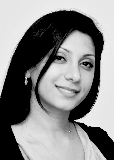
Biography:
Marwa Abdelaziz: Graduated from the University of Geneva in 2010 and since she has been working simultaneously in a private practice as a general dentist and at the University of Geneva (Division of cariology, endodontlogy and pediatric dentistry) teaching students and conducting research. In 2013 at the age of 29 years ,Marwa Abdelaziz started a PhD Project supervised by the University of Amsterdam (ACTA) and the University of Geneva, the subject of the research is focused on non-invasive diagnostic methods and non-invasive treatment options of initial carious lesions like infiltration and sealing.
Abstract:
In developed countries, clinical manifestation of caries lesions is changing: instead of being confronted with wide open cavities, more and more hidden caries are present. For a long time, the focus of the research community was to find a method for the detection of carious lesions without the need for radiographs. In the last few years different detection and diagnostic tools were introduced and are mostly based on laser transillumination or the reflection of the emitted wavelength, providing sensitive information about early non cavitated lesions. This improved imaging and diagnostic capabilities will provide greater support to promote the principles of minimally invasive dentistry including caries monitoring of non-cavitated carious tooth surfaces, remineralisation therapy, and use of non invasive preventive and restorative materials that will improve our ability to monitor disease activity and the out- comes of preservative therapies.
Juliane Leonhardt Amar
University of Geneva, Switzerland
Title: Cavity preparation, and restoration repair/debonding with lasers
Time : 11:40-12:00

Biography:
Juliane Leonhardt Amar is a pediatric dentist working in private practice and at the University of Geneva in Cariology and Pediatric dentistry under Professor Ivo Krecji. She is responsible for training dentists at the community pediatric dental clinic of Geneva and is active in the clinical commissions committee of the EAPD as well as in the scientific commission of the Swiss Society of Pediatric Dentistry.
Abstract:
Dental treatment in young children and anxious patients is difficult because of limited cooperation. Fear of anesthesia, of the drill and of noise related to treatment result in anxiety a negative perception of the dental experience. The erbium yag laser allows cavity preparation without two of these main causes of dental fear. The localized pulsated ablation of hard tissue occurs through micro-explosions due to vaporization of water created by the laser through a sapphire which remains at 2mm of the targeted tissue thus no vibrations are felt. There is no transmission of the heat towards the pulp since the effect is very localized thus no or little pain is experienced. Laser cavity preparation is very useful in pediatric dentistry for treatment of caries in primary teeth as well as for sealants and preventive resin restorations. Children accept and often prefer this new way of treatment for the reasons mentioned. In the permanent dentition, small cavities in the posterior segments and treatment of anterior teeth are also ideal for laser treatment. Other indications include eliminating composite material and making reparations. The selected substance is ablated and then laser etched which allows conditioning for bonding. It is also possible to debond ceramic restorations such veneers because the laser is absorbed in the composite but not in ceramic. Another major advantage of the the erbium yag includes the decontamination of the tissues. The smear layer of dentin is eliminated and the carious tissue is sterilized. Thus primary tooth pulpotomies can be avoided in deep caries. Laser cavity preparation saves time and is interesting from an ergonomic point of view. It is possible to substitute conditioning with phosphoric acid by laser etching which takes very little time in comparison. Only one hand piece is necessary for the entire preparation. Finally, tooth substance removal is very conservative and minimally invasive with the laser, and caries can be evicted selectively.
Avi Reyhanian
Hadassah university isreal
Title: THE USE OF THE ERBIUM YTTRIUM ALUMINUM GARNET (2940 nm) IN A LASER-ASSISTED IMPLANT THERAPY-2016
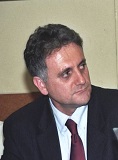
Biography:
Avi Reyhanian graduated from University of Bucharest, Romania in 1988. He then participated in a fellowship program at the Oral & Maxillofacial Department Rambam Hospital in Israel. He currently practices general dentistry and oral surgery in Netanya, Israel. His practice has employed dental lasers since early 2002. He is a member of the academic staff at the Institute of Advanced Dental Education in Haifa, Israel. He is a member of the ALD –Academy of laser dentistry. He is a member of the Israel Society of Dental Implantology. He is the secretary of the Israeli dental laser society. He is lecturing dental lasers in the dental school of Hadassah university from Jerusalem. Five wavelengths are used in his practice: Erbium: YAG (2940nm), CO2 (10600nm), Diode (830nm, 980nm) and LLLT (808nm). He has been publishing and lecturing extensively worldwide in the field of dental laser. He is a reviewer of several dental journals. He was the global opinion leader of Lumenis Company for dental laser division. Today he is a luminary doctor of Syneron Company for the dental laser division.
Abstract:
The array of available clinical applications for laser assisted dentistry is growing rapidly, with the greater number of applications being for oral surgery. Er:YAG is a laser wavelength which is located in the infrared zone of the electromagnetic spectrum (2940nm), is considered to be extremely safe and is the dominant wavelength in dentistry today. Er:YAG is one of the most suitable wavelengths for bone applications. The presentation will demonstrate the use of the Er:YAG laser in the world of implantology and the advantages vs. conventional treatment methods. My purpose in this presentation is to put some order into the chaotic information surrounding the subject and to provide some answers to the most common and frequent questions I often meet: How far we can go with this technology? Is it just a marketing tool or proven therapy? Where is the line between reality and fantasy? Does the new technology completely replace the conventional methods and if not, at which point do we lay the laser's hand piece down and re-employ the "old" tools and conventional ways? This lecture will exhibit, beyond any doubts, that Er:YAG laser is very valuable tools for implantology and will show cases studies with 8-year follow-ups, each procedure explained in details including video exhibitions.
- Dental Hygeine
Session Introduction
Dr. Abdullah Mohammed Alzahem
King Saud bin Abdulaziz University for Health Sciences,Saudi
Title: Effectiveness of a dental students stress management program
Time : 12:00-12:20

Biography:
Dr. Abdullah Alzahem earned his BDS degree from King Saud University on 1995. In 1997, herncompleted a fellowship program in the field of Temporomandibular Joint with Tufts School ofrnDental Medicine, Boston, MA. In 1998, he completed Advanced Education in General Dentistryrnresidency program in Baylor College of Dentistry, Dallas, TX. In 2004 he was annonced as Fellowrnof Academcy of General Dentistry, and appointed as Dental Consultant. In 2009 he completedrnMaster in Medical Education in King Saud bin Abdulaziz University for Health Sciences. In 2015rnhe earned a PhD degree from Erasmus University Rotterdam, The Netherlands.
Abstract:
The dental education stress effects and sources were explored thoroughly in the literature,rnbut the effectiveness of stress management programs received less attention. This study introducedrna new stress management program, named Dental Education Stress Management (DESM) program.rnIt showed its effectiveness in a quasi-experimental pretest-posttest-follow-up-control group design.rnThe new program was based on the principle of psychoeducation and consisted of three 90-minuternsessions, to teach dental students how to better deal with their stress symptoms and to reduce theirrngeneral stress level. Two instruments were used to assess the level of stress of the dental students,rnnamely the Dental Environment Stress questionnaire (DES), and the Psychological Stress Measurern(PSM-9). Results show that the DESM program has the desired effect of decreasing the stress levelsrnof its participants, and these effects lasted for at least two weeks.. Because of severalrnmethodological limitations of the study more research is needed to draw more generalizablernconclusions.
Morteza Rostam Beigi
Dental School of Tehran University of Medical Sciences,Pakisthan
Title: Cost-benefit analysis of integration of oral interventions in “Health Promoting Schools†program in Alborz schools, Iran
Biography:
Abstract:
Because of functional reasons and relationship with burden of disease, the oral health is so important.Childhood and adolescence are the best time to learn and know how to live healthy and also keep it on during the life. It is exactly the school time. Availability and number of schools as a comprehensive educational setting around the world, make them to a suitable place to oral health promotion.rn“Health Promoting Schools†(HPS) program is an useful program to guide supportive practices in promoting the development of healthy behaviors in students.rnThe World Health Organization\'s (WHO\'s) HPS program framework is flawless as a general guide.The DOCUMENT ELEVEN (Oral Health Promotion: An Essential Element of a Health-Promoting School) of WHO, is the suitable guide to integrate of “oral interventions†in HPS program. But as it is mentioned in “Local Action Creating†(publication of WHO) HPS program from country to country, even within different regions and communities of one country, schools have distinct strengths and needs.According to distinct strengths and needs of schools in Alborz, we integrate oral interventions in the HPS program via the most effective manner so the program was customized to Alborz students.rnSo, the purpose of this study was to know:rnIs the integration of oral interventions in the HPS program, theoretically cost-benefit per each student or not? rnMethod:rn We searched the following electronic databases OVID, MEDLINE, EMBASE, IRCTC, CINAHL, Biblio Map, IBSC, Global Health Database, SIGLE, Australian Education Index, British Education Index, Database of Education Research, and also relevant libraries, websites, and other relevant articles to find how can we integrate the “oral interventions†in HPS program and cost-benefit analysis of implementation of program .Obtained information via the mentioned sources, presented to experts and stakeholders. Brainstorming, nominal group technique, the Delphi method and tri-angulation technique were employed to achieve the most correct answers. After integration of oral interventions in the HPS program, we implement the cost-benefit analysis per each student. rn Result:rn Our cost-benefit analysis showed that the implementation of integrated package of oral health interventions in HPS program that was customized and localized for Iran, Alborz, was more beneficial in reducing of 1 unit in DMFT of Alborz students. rnConclusion:rnThe localized and customized package was more beneficial to influencing on oral health status and promotion and it have to be a general program for schools
Wolkerstorfer
curator of the Museum for the history of dentistry and dental technology Linz Austria
Title: The birth of Modern toothpaste
Biography:
The aim of this presentation is to show the way of the invention of the modern toothpaste and the life of the genius, who started this part of consumer goods industry. Therefore the authors investigated recordings of the pioneer in this field of products, that were never published before and many contemporary and new historical references. From the making of candles, soaps and perfumes to toothpaste there were 50 years of research, big investments and fights against sly and powerful competitors and authorities, to form a company that was strong enough to establish the beginning of modern oral hygiene within 25 years, using methods of modern medicine, biology, jurisprudence, advertising and industrial procedures. In the upcoming nationalism and the resulting restrictions in trade together with shortage of raw materials, that reached a first high point in world war one and the period, that followed, like many in those years, this company failed at last. The inventor of the toothpaste was forced to sell his knowhow and some of his brand names. But because the name of the first modern style toothpaste became so popular since the last decade of the 1880ies, that in some succession countries of the long vanished multiracial state the name is still used as a synonym for toothpastes in general. Besides do You know, that most dentists and medical doctors of that time did not like toothpastes at all? In our presentation we can show you unique documents and pictures from the days, when dentistry started to change from repair oriented point of view mainly to an attitude focused on prophylaxis.
Abstract:
- Oral and Maxillofacial surgery
Session Introduction
Narjiss Akerzoul
Mohammed V University of Rabat, Morocco
Title: The Decompression Technique : A Minimally Invasive Oral Surgery Approach
Time : 12:20-12:40
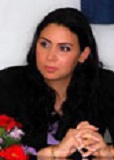
Biography:
Presenter and corresponding Author : Dr NARJISS AKERZOUL \r\n\r\n2005-2011 : Doctorate of Dental Surgery (DDS), Faculty of Dentistry of Rabat, Mohammed V University, Morocco\r\n2011-2012 : General pratitionner Dentist in Oral Health Center of Guelmim City, Morocco\r\n2012-Present : 3rd Year Resident Oral Surgeon in Center of Consultation of Dental Treatments of Rabat, Faculty of Dentistry of Rabat, Mohammed V University, Morocco\r\n2014-2015 : Universitary Diploma of Biostatistics and Research Methodology\r\n2014-Present : \r\n-Author of many International Publications in the field of Oral Surgery and Oral Oncology.\r\n- International Presenter (Oral & Poster Presenter) in different meetings of Oral Surgery and Head & Neck Oncology in Turkey and the USA.\r\nMay 2015-Present : Editorial Board Member in Department of Oral and Maxillofacial Surgery of the International Journal of Oral Health and Medical Research ( IJOHMR)\r\nJuly 2015-Present : Reviewer in OMICS GROUP Biomedical Journals.\r\nSeptember2015-Present : Editorial Board Member and Reviewer in the “Journal of Cosmetology and Orofacial Surgeryâ€.
Abstract:
The purpose of this paper is to present case report of a dentigerous cyst associated to permanent teeth in children treated by conservative techniques.\r\n Dentigerous cyst is the most common developmental cysts of the jaws. Conservative treatment is very effective to this entity and aims at eliminating the cystic tissue and preserving the permanent tooth involved in the pathology. Two techniques are described as conservative treatment for these cysts, marsupialization and the decompression. \r\nAn eight years female child was affected by a large lesion at the right side of the mandible associated to tooth 45. The dentigerous cyst promoted severe tooth displacement. \r\nThe patient was treated with decompression which could manage enough space to do a surgical Orthodontic traction, and therefore place conveniently the permanent tooth
Ruth Nebel
Researcher, Berlin, Germany
Title: Maxilla’s Occlusal Plane –Tool for Orientation in Space? A new Aspect concerning Temporomandibular Dysfunction (TMD
Time : 13:25-13:45
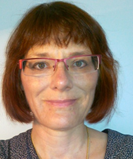
Biography:
Abstract:
A connection between teeth and body posture has been assumed ever since. While occlusion all in all has not shown a connection to body posture, craniofacial heights do provide this. This suggests a relation to an external goal and raises the question, whether the upper occlusal plane is positioned to space rather than to the body. This would even concern man’s orientation to space. rnrnWhile an EbM/EbD- investigation has been lacking in the theme, video recordings with exact focus were used. The position of the upper occlusal plane is shown with a marking cross fixed to upper teeth. It then has been adjusted to the true horizontal and the movement direction.rnrnProvisional ResultsrnIn walking, running and jumpingrn- the marking cross stays spatially constantrn- wafers of asymmetrical thickness affect an asymmetric body posture and uneven motion. The marking cross stays spatially constant meanwhile.rn- The interpupillary line is spinning around the marking cross.rnrnProvisionally is concluded, that teeth seem to be connected to posture via the position of the occlusal plane to the skull. Maxilla and the upper occlusal plane seem to image the spatial dimensions. Changes in teeth length, even iatrogenic (!), will turn body posture and movements asymmetrically: Shear forces by torsions and a non-axial loading will damage the body’s structures. This seems to be the pathomechanism for pain in TMD.rnrnIntegrating the spatial function of teeth in dentistry may prevent and cure TMD. Therefore, a spatial articulator is recommended. rn
Saliha Chbicheb
Mohammed V University, Morocco
Title: Burkitt lymphoma in children: A case report
Time : 13:45-14:05
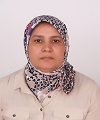
Biography:
Saliha Chbicheb completed Internship in Periodontology, Oral surgery, Pediatric dentistry, Prosthodontics and Orthodontics for a period of 2 years at Consultation Center of Dental Treatments of Casablanca, Faculty of Dentistry of Casablanca, Morocco. She obtained Doctorate of Dental Surgery, Faculty of Dentistry of Casablanca, Ain Chok University of Casablanca, Morocco. She was a Resident in Oral surgery department; Consultation Center of Dental Treatment of Rabat, Faculty of Dentistry of Rabat-Morocco. She is the author of many national and international publications in the field of oral surgery, oral medicine and oral oncology. She attended as an International Speaker (Oral & Poster Presenter) in different meetings of Oral Surgery and Head & Neck Oncology. She is a Professor and Head of Department of Oral Surgery in the Consultation Center of Dental Treatments of Rabat, Mohammed V University of Rabat-Morocco. She is the Member of the French society of oral medicine and oral surgery, The Moroccan Society of Oral Medicine and Oral Surgery and Permanent Member in The Research Project of Cancers of the oral cavity.
Abstract:
Burkitt’s lymphoma is rare forms of malignant non-Hodgkin lymphoma mature B-cells. In Europe and North America, about half of non-Hodgkin lymphomas is seen in children and about 2% of those in adults. Indeed, two incidence peaks exist: The first is in childhood/adolescence/early adulthood and the second after 40 years. Male individuals are preferentially affected. Patients infected with the HIV virus and that the antiviral therapy is not optimal are particularly susceptible to developing Burkitt's lymphoma. Two forms exist: One is called "endemic" (sub tropical Africa) and linked to the Epstein Barr Virus (EBV). Diagnosis is based on biopsy of a mass or puncture of an effusion or bone marrow revealing the presence of tumor cells. The staging is performed using imaging (mainly ultrasound and scanner). Differential diagnosis includes other forms of child abdominal tumors (such as Wilms' tumor and neuroblastoma. The management should be done in a specialized center in oncology/hematology. The treatment is based on chemotherapy which is some months but intensive. Our clinical observation reports the case of a girl aged 13 who presented with severe oral manifestations budding Burkitt lymphoma having evolved after 2 years of treatment.
Huseyin Avni Balcioglu
Istanbul University Faculty of Dentistry, Istanbul, Turkey
Title: Title: Developmental Anatomy of the Temporomandibular Joint for the Pedodontist
Time : 14:05-14:25

Biography:
H. A. Balcioglu, DDS, PhD, holds the position of Associate Professor in the Department of Anatomy at Istanbul University Faculty of Dentistry. After receiving his dental degree from Istanbul University Faculty of Dentistry, in 2001, Dr. Balcioglu worked as a Research Assistant in the department of Anatomy, for five years, and completed the PhD program, while he also worked in private dental practice. He took part in administrative activites associated with his roles as a faculty board member. He is currently a member of the Board of Medical Specialties Reporting System Commission (TUKMOS) of Turkish Ministry of Health. Dr. Balcioglu has lectured as an invited speaker in different symposiums, particularly about TMJ/TMD. His research interests relate primarily to TMJ/TMD, radiologic anatomy and anatomy education.
Abstract:
Even though temporomandibular joint and its anatomical relations seem to be of little significance in the view of most pedodontic practitioners, the collection of data needed to establish the proper diagnosis in the field of pediatric dentistry should surely involve the basic knowledge of developmental anatomy of the temporomandibular joint. From the articular fossa, the first anatomical structure to become recognizable during the development process, to the degenerated intra-articular disc which appeared as a result of parafunctional habits of an 18- year-old, the unique morphological features of this unique joint, from the standpoint of anatomical sciences, will be briefly presented with a developmental perspective in this speech. The audience will be provided with some important clinical implications to consider during performing pedodontics and translational research as well.
Wafaa El Wady
Consultation Center of Dental Treatments of Rabat,morroco
Title: Viroinduced oral cancers
Time : 14:25-14:45

Biography:
Professor and chief department of Oral Surgery in the Consultation Center of Dental Treatments of Rabat
Abstract:
Oral cavity cancers are in sixth place in men and the eighth in women worldwide. They are often favored by alcohol intoxication and/or smoking but approximately 25% of these cancers are virus-induced tumors. Four viruses are clearly associated with the occurrence of some forms of cancer of the oral cavity.rnThe human papilloma virus (HPV) belongs to the family of the Papillomaviridae. It’s an extremely common virus in the nature with sexual transmission. Some high-risk genotypes are considered as agents who may increase thecancer risk of the upper aerodigestive tract. These cancers are a distinct clinical entity and develop in young patients not necessarily subject to Ethylo tobacco intoxication.They mostly affect the oropharynx, invade the lymph nodes and are poorly differentiated histologically.rnEpstein-Barr virus (EBV) a member of the Herpesviridae family that infects most of the world\'s population. In the oral cavity, EBV,transmitted by saliva is associated with Burkitt\'s lymphoma. It is an aggressive form of non-Hodgkin lymphoma due to the malignant proliferation of cells B. There are three types of Burkitt: endemic, sporadic and linked to HIV infection, which are associated with significant differences in epidemiology, clinical form and biology.rnThe human herpesvirus 8 (HHV-8), also called KaposiSarcoma Herpesvirus (KSHV) is considered as the etiologic agent of Kaposi\'s sarcoma. It’s a malignant multifocal mesenchymal tumor of blood and lymph vessels. There are four types of sarcoma: classic, endemic, iatrogenic and epidemic HIV associated, which are involved with significant differences in clinical and epidemiological aspects.rnThe Hepatitis C virus (HCV) is an RNA virus belonging to the Flaviviridae family. It is transmitted primarily through blood. At the oral cavity, HCV is associated with oral lichen planus (OLP). It is a chronic inflammatory skin disease, characterized by a keratinization disorder with polymorphic clinical aspects. During its evolution, the OLP has an increased risk of malignant transformation leading to the development of a verrucous or squamous cell carcinoma.rn
- endodontics
Session Introduction
Fouad Abduljabbar
King Saud bin Abdulaziz University for Health Sciences,Saudi
Title: Treatment of Dens invaginatus with anatomical modification
Time : 14:45-15:05

Biography:
- Consultant Endodontist rn- Director of Dental Supplies and Materials & Equipment of Endodontics department rn- Coordinator of Endodontic department rn- Clinical supervisor of Saudi board dental student and dental interns rnDental services, West Region, King Abdulaziz medical City, The ministry of National Guard, Jeddah,rnSaudi Arabiarnrn- Academic Teaching Staff, Ibn Sina Medical College, Jeddah, Saudi ArabiarnrnI am author of some scientific articles in reputed journals. I have presented number of dental lectures, as well as dental courses in and out of Saudi Arabia. rn
Abstract:
Dens invaginatus is a dental anomaly that may show many different complex anatomical forms. The complexity of the internal anatomy of the root canal may create difficulties and challenges for treatment completion of the root canal. A 10-year-old girl was referred by her dentist for suffering from pain and a persistent infection arising from the maxillary left lateral incisor. After clinical examination, the case was classified as Oehler’s type II due to invagination extending through the root canal with no communication with the periodontal tissue. The main canal was contained a central cylindrical mass of hard tissue. Owing to a limitation in access to the canal system and the cleaning and sealing of canal spaces, a modification of the internal anatomy of the canal system was achieved under the operating microscope. The conventional chemical and mechanical preparation with sodium hypochlorite combined with intracanal calcium hydroxide was done. The root canal was obturated with MTA. In this case, the conventional root canal treatment and the modification of the internal anatomy were able to promote the regression of the lesion noted at 2-year follow up.
- Periodontics
Session Introduction
Abdulhameed Ghassan Albeshr
King Saud bin Abdulaziz University for Health Sciences,Saudi
Title: Periodontal Disease and Associated Risk Factors; A Systematic Review
Time : 15:05-15:25

Biography:
Dr. Abdulhameed G.Albeshr earned his BDS degree from King Saud University in Riyadh, SaudirnArabia in 2010. In 2015, he completed his master of public health in community andrnenvironmental health in King Saud bin Abdulaziz University for Health Sciences in Riyadh, SaudirnArabia.
Abstract:
Introduction: Periodontal disease is more prominent in developing countries. It is common in all ages and affect both genders. Unhealthy periodontium cause serious problems for the individual and lead to tooth loss Objective: Determine prevalence of periodontal disease and its risk factors. Method: Electronic search conducted on PubMed using Inclusion criteria; articles in English about prevalence of periodontal disease and its risk factors from 1990 to 2014. 47 articles were identified initially, and after applying exclusion criteria only nine articles were selected for this review. Results: Prevalence of periodontal disease affect 63% - 68%. In the patients above 40 years old, an average of 76% of extracted teeth was due to periodontal disease. The main risk factor for periodontal disease is poor oral hygiene. The role of smoking in developing of periodontal disease was clear. Diabetic patients have the highest prevalence of periodontal disease compared with other diseases, which is 21%. Conclusion: The prevalence of the periodontal disease is high and more studies needed in different cities and in rural areas. Proper sampling and longitudinal studies should be considered to ensure representativeness and confirm the causality. The direct relation between poor oral hygiene and periodontal disease is clear. This review provides convincing evidence about effect of tobacco smoking on oral health. The review shows high prevalence of periodontal disease among diabetic patients. Better understand the full extent and characteristics of periodontal disease in our population beside public health programs will diminish the effects of the disease.
Y.Alhabdan
King Saud bin Abdulaziz University for Health Sciences
Title: Dental Caries Among Children and its Risk Factors; A systematic Review
Time : 15:25-15:45
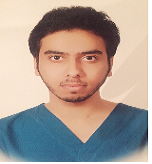
Biography:
Dr. Abdulhameed G.Albeshr earned his BDS degree from King Saud University in Riyadh, SaudirnArabia in 2010. In 2015, he completed his master of public health in community andrnenvironmental health in King Saud bin Abdulaziz University for Health Sciences in Riyadh, SaudirnArabia.
Abstract:
Introduction: Dental caries is one of the most common diseases and most cause of tooth loss in young people. It is painful and can harm nutrition and overall health. However, having baseline information about oral health status is important for planning and evaluation of the improvement in oral health. Objective: Determine prevalence of dental caries among children and identify the associated risk factors. Method: An electronic search conducted to identify articles in PubMed that met our inclusion criteria. A total of 43 articles were identified initially, and after applying exclusion criteria a total of ten articles were selected for this systematic review. Results: Prevalence of caries in primary dentation of children under 6 years ranged from 73-99% and the mean dmft score ranged from 2.92–6.53. In the permanent dentition, the prevalence varied from 87.9-99% and the mean DMFT ranged from 0.78 to 5.94. Prevalence of caries in primary teeth was higher in the urban population. §Poor oral hygiene, dental health knowledge, frequency consumption of cariogenic food, developmental enamel defect and the use of some medication which affect salivary flow rate were found as possible risk factors. A strong possible link was found between poor oral hygiene and prevalence of dental caries with a prevalence of 57.8%. Conclusion: Dental caries is a serious dental public health problem that warrants the immediate attention. Oral health education programs must be deployed and school based approaches should be combined with family and community preventive programs. However, dental caries is both curable and preventable. Therefore, dental caries should be given the top priority and the full resources. Biography Dr. Yazeed A. Alhabdan earned his BDS degree from King Saud University in Riyadh, Saudi Arabia in 2010. In 2015, he completed his master of public health in community and environmental health in King Saud bin Abdulaziz University for Health Sciences in Riyadh, Saudi Arabia.
- Preventive and operative dentistry
Session Introduction
Nilufer Balcioglu
Istanbul University, Istanbul, Turkey
Title: Current status of platelet rich fibrin in oral implantology
Time : 15:45-16:05

Biography:
Dr. Nilufer Balcioglu was graduated from Istanbul University, Faculty of Dentistry in 2001. She obtained the PhD degree from Istanbul University Faculty of Dentistry, Department of Oral Implantology in 2008. She has been working as an Associate Professor at the same department.
Abstract:
First introduced in 2001, Platelet-rich fibrin (PRF) is an autologous fibrin matrix which can be defined as a second-generation platelet concentrate since it does contain leukocytes and does not necessarily require an anticoagulant. Last decades, platelet concentrates have been used in many fields of dentistry. These preparations are aimed to use on operated or wounded sites to achieve a better process of stimulating and accelerate healing mechanism. Although platelet concentrates offer impressive therapeutic perspectives, their clinical relevance implicates a high controversy. Both the translational research and and clinical studies on PRF are a confused and contradictory in a way. The differences mainly depend on preparation techniques and research designs as well. Today several techniques for platelet concentrates are available. The cutting edge technique is Platelet rich fibrin (PRF). PRF is classified as a leukocyte and fibrin concentrate. The main difference between PRF and other platelet concentrates is that the PRF technique does not require any anticoagulant, carrier or activator. PRF can be used successfully solely or in combination with graft materials in the treatment of intrabony periodontal defect, sinüs lifting surgery, socket preservation and peri-implant defects. The goal of this presentation is to describe the current types of state of the art PRF techniques as well as the clinical success rate of these techniques in oral implantology.
Elie E Daou
Lebanese University, Lebanon
Title: Bonding mechanism of porcelain to zirconia frameworks: Problems and solutions?
Time : 16:20 to 16:40

Biography:
Dr. Elie E DAOU was graduated as Dental surgeon in 1994, from Saint Joseph University in Beirut. Then he got a Master in Sciences in 1999, a DES in Prosthodontics in 2002 from the same university, and a UD in “Fundamentals in Medical Research†from F-MRI –LU in 2015. Besides his private practice, he was in Department of Removable Prosthodontics till 2005 at saint Joseph University. He is a Chief Clinical instructor in the Department of Prosthodontics, at the Lebanese University (LU) in Beirut. He is preparing a PhD at the LU. He has published several papers in peer-reviewed journals.
Abstract:
Abstract: Different restorative materials are proposed to the clinician. Their reliability depends on the percentage of restorations still functioning after placement. Different study conditions make the comparison of obtained data challenging. Zirconia frameworks are now widely used by dentists. However, some problems and concerns are reported from the dental market. Zirconia restorations emerged as a substitute to metal ceramic restoration, in response to patients’ esthetics growing demand. The metal-porcelain bonding mechanism is well known; whereas, the zirconia-porcelain interface is still not fully understood. Several factors have been pointed to explain the high porcelain chipping incidence. Latest findings will be detailed in an attempt to explain the zirconia-porcelain bonding. Similarities and differences between metal and zirconia have been raised in the literature.
Narjiss Akerzoul
Consultation Center of Dental Treatments of Rabat,Morroco
Title: Oral Squamous Cell Carcinoma in Pediatric Moroccan Population: A Retrospective Study
Time : 16:40-17:00

Biography:
2005-2011 : Doctorate of Dental Surgery (DDS), Faculty of Dentistry of Rabat, Mohammed V University, Moroccorn2011-2012 : General pratitionner Dentist in Oral Health Center of Guelmim City, Moroccorn2012-Present : 3rd Year Resident Oral Surgeon in Center of Consultation of Dental Treatments of Rabat, Faculty of Dentistry of Rabat, Mohammed V University, Moroccorn2014-2015 : Universitary Diploma of Biostatistics and Research Methodologyrn2014-Present : rn-Author of many International Publications in the field of Oral Surgery and Oral Oncology.rn- International Presenter (Oral & Poster Presenter) in different meetings of Oral Surgery and Head & Neck Oncology in Turkey and the USA.rnMay 2015-Present : Editorial Board Member in Department of Oral and Maxillofacial Surgery of the International Journal of Oral Health and Medical Research ( IJOHMR)rnJuly 2015-Present : Reviewer in OMICS GROUP Biomedical Journals.rnSeptember 2015-Present : Editorial Board Member in Journal of Cosmetology and Orofacial Surgery.
Abstract:
PURPOSE: rnStudy the epidemiological and histopathological profile of the oral cancers in children in care at the Pediatric Hemato-Oncology, Stomatology and Maxillofacial Surgery departments at the 20 August hospital in Casablanca, and at the hospital of children in Rabat. Our aim is to define the importance of the pediatric oncology, especially the one affecting the oral cavity, and also to describe the oral cancers in children, theirs frequences and theirs histopathological characteristics. We did collect 71 patients consultation records and files between 2004- 2012. rnMATERIALS AND METHODS: rnThis is a retrospective study of 126 children hospitalized between 2010 and 2013 of the Pediatric Hemato-Oncology Department, Stomatology and Maxillofacial Surgery department at the 20 August hospital in Casablanca, and also in the Pediatric Hemato-Oncology Department at the hospital of children in Rabat, and in which we did diagnose a confirmed cancer of the oral cavity. rnRESULTS:rn In our sample, all age groups were affected by the disease process, but ages between [0-4] years and between [13-16] were the most affected with an average of age of 8 years, and extremes ranging from 4 months to 16 years. In our population sex sample, we noted a slight female predominance with 50.7% of cases . Non-Hodgkin lymphoma Burkitt was the most common histological type with 35.2% of cases. Cheeks represented the most frequent localization with 37.9% of cases, while the maxillary represented 19.7% of cases. Chemotherapy has been the exclusive therapeutic strategy most used in our sample in 67.6% of cases.rn CONCLUSION: rnEpidemiological, clinical and pathological characteristics of cancers of the oral cavity in our population are not different from the literature data. However, the parents lack of awareness and late diagnosis of these lesions appear to be responsible for the dramatic profile of oral cancers.rn

